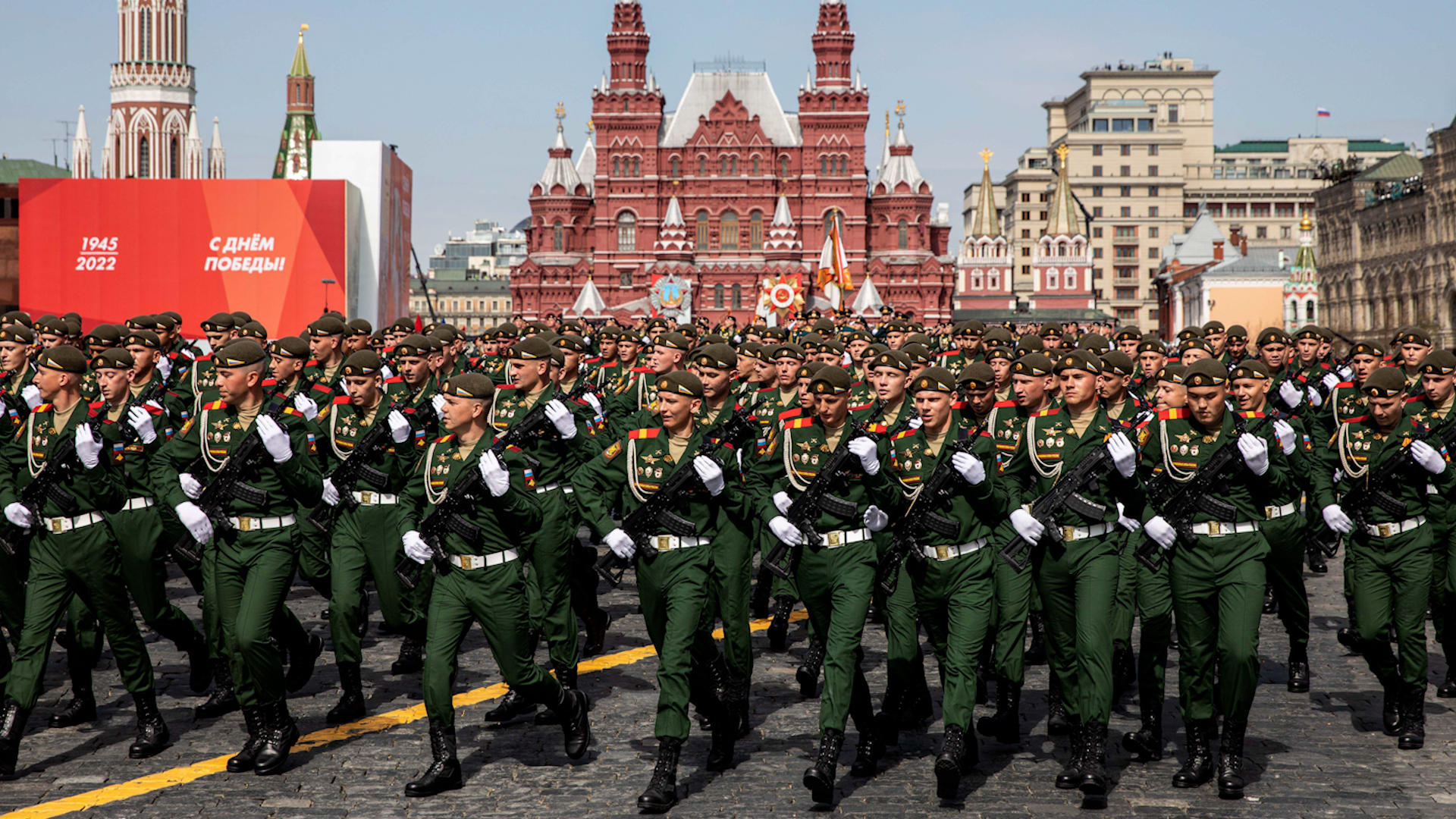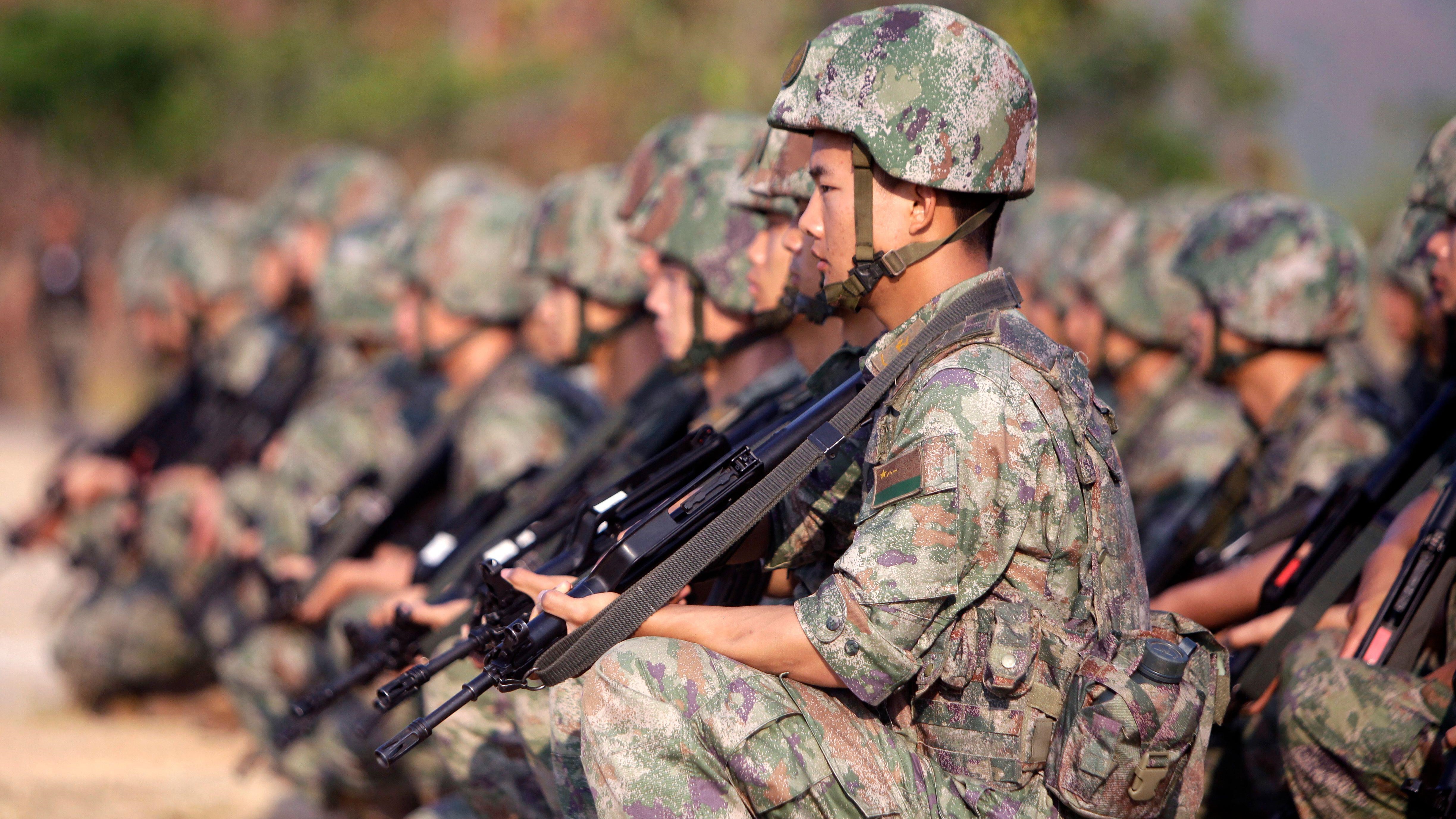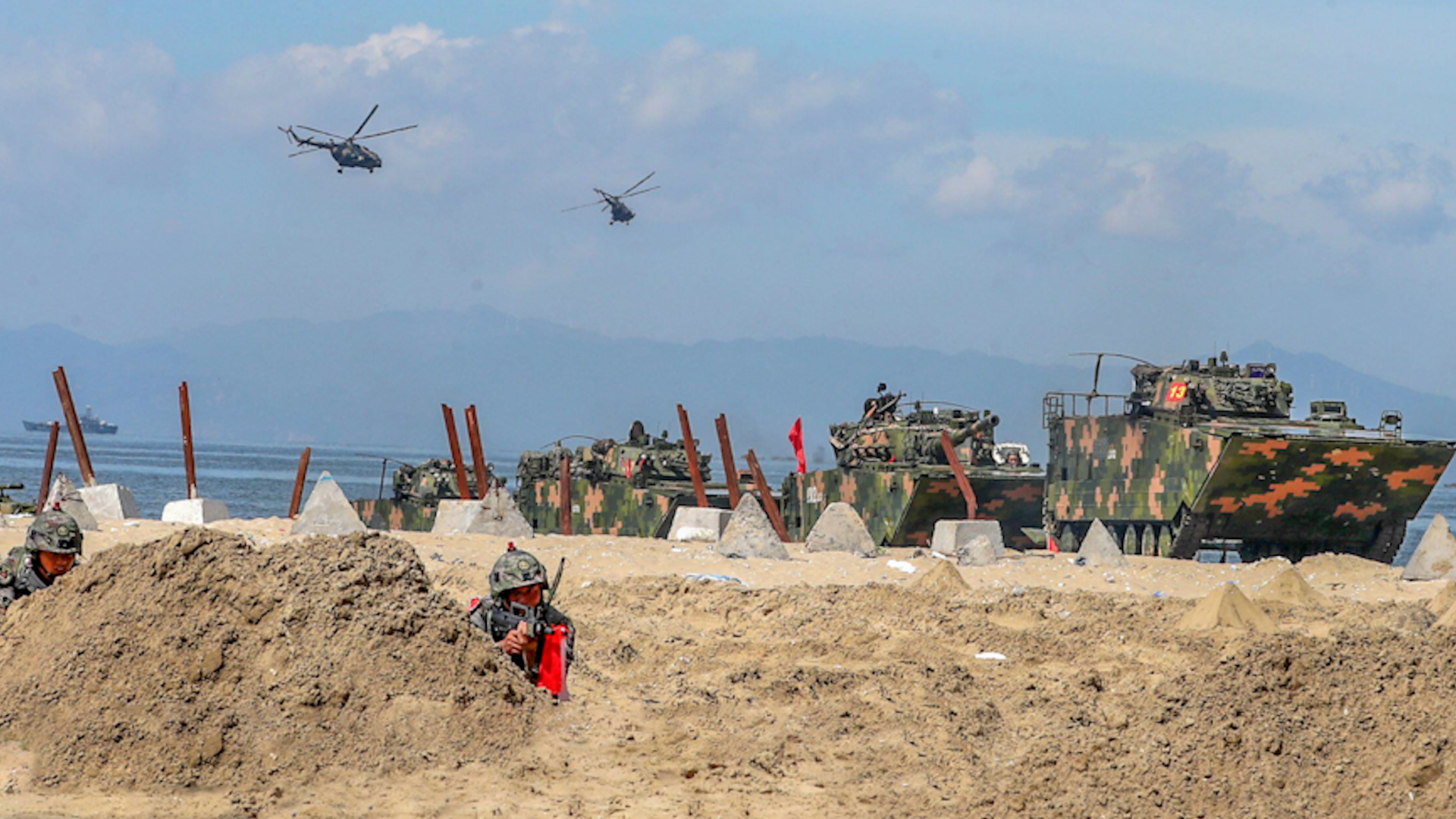
New world order? Russian military losing world number two spot to China

A David and Goliath war in Ukraine is reshaping the perception of Russia as the second-place military superpower.
Struggling to assert its dominance over a military few experts would have placed in a 'Top 15', Moscow's threat to the gold-standard US force is losing credibility with defence analysts – with China gaining ground across every aspect of warfighting, at least in theory.
Russia's nuclear weapon count matches the entire Nato alliance, but tapping into that looming resource presents as much danger to Vladimir Putin as the rest of us.
Putting the threat of an apocalypse to one side, here is what Ukraine has taught us about Russia and whether China has taken its silver medal.
Manpower
According to the International Institute for Strategic Studies (IISS), an authority on global security, political risk and military conflict, Russia's 1.2 million active personnel comes close to the US, but far behind China's two million-strong People's Liberation Army (PLA).
Numbers are still a strength for Russia, with triple the reserves of the PLA, but a heavy reliance on conscription to bulk up its force has backfired in Ukraine.
Ben Hodges, former commander of the US Army in Europe, says previous successful missions in Syria and Crimea had warped the world's view of Russia's forces.
Crucially, though, laws had prevented conscripts from entering these conflicts outside of Russian borders – putting only a slither of full-time fighters in the spotlight.
"It was the same guys doing everything," General Hodges explained.

The wider lens of all-out war in Ukraine has exposed a demotivated force, leaning on mobilised civilians and contract fighters with varying success.
China also uses conscription and has not been combat-tested since the 70s, though, so it's difficult for experts to compare the two.
Observing the way Russia trained its people years before the war, Gen Hodges noted a rejection of the Western 'work to failure' approach (blue vs blue wargames beating a unit down until it improved) and a lack of joined-up drills between air force, army and navy.
That has underpinned examples of poor co-ordination in Ukraine.
On the opening day of the war, a botched air assault on Antonov Airport near Kyiv saw an initial swarm of Russian helicopters left isolated and soon destroyed.
As for China, Henry Boyd from IISS says "similar challenges" exist in military training and access to talent over the last decade and a half.
Despite being the largest military on Earth, it is unclear just how prepared for war Chinese manpower is.

Army
General Hodges now ranks the armies of Ukraine, Finland and Poland ahead of Russia's, while Mr Boyd believes China's heavy armour is "better pound for pound, with a larger and slightly more updated tank fleet".
Russia shares China's focus on artillery but has struggled logistically to move train-loads of ammunition into Ukraine while its storage sites are targeted.
While Moscow decided to upgrade, not replace, most of its Soviet-era armour, China has beaten them to it.
As Russian vehicles run into mirror-image opposition, Mr Boyd says China has achieved Putin's dream of family upgrades to heavy and medium-weight formations in the last decade – "fielding multiple brigades of wheeled 8x8 vehicles" similar to the US Stryker now being sent to fight Russia.
Throwing waves of ground troops forward with little instruction in an attempt to overwhelm Ukraine is a tactic that has not evolved since the two World Wars.
While untested, Mr Boyd says the Chinese approach would be influenced by American professionalism in the first Gulf War – which came as a "hammer blow" to the quantity-over-quality mindset.

Air Force
Russia's air forces possess good planes on paper, but its organisation made it a "non-starter" in Ukraine – labelled "Bangladesh with nuclear missiles" by Richard Aboulafia of AeroDynamic Advisory.
A lack of sorties and co-ordination has stopped what looked like a first-grade force from gaining air superiority in today's war.
The main beneficiary of Russia's defence modernisation programmes in the late 2000s, experts had been impressed by an air force with hundreds of fourth-generation jets like the SU-30s (roughly equivalent to America's Gulf War hero, the F-15).
Although China matches its hardware all the way and owns better air-to-air missiles, Russia has had air-to-air success in Ukraine.
However, its ground attack planes have dropped like flies at the hands of surface-to-air missiles.
Mr Aboulafia puts this down to a lack of investment in "enablers" – things like early warning and reconnaissance aircraft to keep track of the enemy, and electronic attack planes to fire anti-radiation missiles that could have bypassed Ukraine’s radars.
It's not clear from China's inventory that it would have done much better here.
There's been no fifth-generation trump card jet to help out either. Russia does not have a fifth-generation jet like the F-35 used by the UK and US – the handful of its SU-57s in service are considered 'generation 4.5' by the rest of the world.
China, meanwhile, has put up to 200 of its impressive J-20s in service.
One big, innovative play has been Moscow firing its new hypersonic missiles. Hard to track and intercept, they’ve been the subject of an international arms race.
But, observing their application in the war, Mr Aboulafia jokes: "You can destroy a target for $30,000, or spend millions firing these weapons, to definitely destroy it."
Still ahead of China in radar and ballistic missile defence, that has not helped a Russian air force on the attack and our expert says it's now been overtaken.
Navy
At sea, Russia's surface fleet has for years looked menacing – legacy battle cruisers projecting an image of power.
But in Ukraine, it’s been largely kept out of the fight, with Nick Childs of the IISS questioning the "reality of power" it holds today.
"Gunboat diplomacy and showing the flag aside, they were always going to be found wanting in actual combat," he said.
Crucially, the Soviet-era navy was "designed as a blue water force" – to destroy Nato navies at sea – but found a "different enemy" in Ukraine's coastal defences and lost its flagship cruiser early in the war.
The Moskva had been key for air defence, so Ukrainian jets immediately posed a greater threat to Russian ships aiming to do much more than hang back and strike from a distance.
Modernising as a green water navy, Mr Childs is impressed by Russia's smaller ships designed to work closer to shore and attack land close by.
Meanwhile, an experienced Russian submarine fleet is still widely deemed world number two, thanks to technology onboard its ballistic and cruise missile and nuclear-powered attack vessels.
However, China's navy has more surface ships than gold-standard America, far less dispersed around the globe were they to be called upon.
Kept at bay by Ukraine, further back than that in fact, we understand Russia's navy has generally been overtaken by China.
Space and Cyberspace
Former US officials have described Russia as a 'hurricane' in cyber, but China as 'climate change'.
It's as hard to define a country's cyber strength as it is to pinpoint clear acts of cybercrime committed in this grey zone.
Chris Painter, the world's first cyber diplomat at the US State Department, said: "Russian cyberspace has the edge in disruptive and disinformation campaigns, though Beijing has greater resources to threaten the West long-term."
Moscow hackers targeted Viasat, a US satellite company, to hurt Ukrainian command and control early in the war, and Mr Painter rejects the idea that Russia cannot execute certain styles of cyber-attack just because we have not seen them used in Ukraine.
Recent years have seen China move away from "brutish" data-hoovering and closer to Russia's more sophisticated approach, he added.
While the US is out in front, both Russia and China "could best" it in cyberspace under certain conditions.
Juliana Suess from RUSI believes "the more advanced a nation becomes in space, the more reliant on space its forces become" – so a loss here could cause a domino effect.
While China lacks experience in the domain, it boasts greater hardware capabilities than Russia (including its own space station).
With a sophisticated Cold War legacy, a sanction-hit Russia has struggled to bring in the right parts, money and people to build on its head start in space, Ms Suess added.
In Ukraine, downed Russian jets with civilian GPS strapped onto dashboards have been interpreted as a lack of confidence in dedicated military systems.
On the other hand, Moscow does claim to have used electronic warfare against Ukrainian communications and dazzle lasers against observation satellites watching its forces.
Moscow is also developing a 'Peresvet' laser weapon which Ms Suess says, "is likely capable of temporarily dazzling satellites".
Future wars in space could include anti-satellite missiles fired from Earth – China shooting higher than Russia in its tests while developing similar weapons to leave behind less floating mess for its own satellites to hit.
Conclusion
The US has already labelled Russia the 'acute threat' and China the 'pacing challenge' to its number one spot.
Henry Boyd described Russian military corruption as "a feature not a bug" that has incorrectly shaped perceptions of its size and power, while almost every analyst failed to place Russia clearly ahead of China in their respective domain.
There's still speculation over the level of corruption and transparency in China's PLA, however.
Lacking the same opportunity to demonstrate success or failure, only time – or war – can tell if China too has been overestimated.









